Scandinavia, which is a region in northern Europe, is home to several countries, each of which has a national flag.
While each national flag in the Scandinavian region is unique in some way, there are certain features that they have in common as well, which depicts the regional unity they have in areas like geography, history, and culture.
The flags of Scandinavian countries are rectangular and feature a Nordic cross on the hoist, or pole-side, of the banner.
The cross represents Christianity and the unity that Scandinavian nations have in the region. Scandinavian flags also vary in color, giving them distinction as well.
While Scandinavian flags are similar to each other, there are reasons for their differences.
Each has a meaning and significance of its own and understanding those historical and cultural facts helps people learn and respect each Scandinavian country as its own entity as well as the region as a whole.
Scandinavia is one of the happiest regions in the world. See Why Are Scandinavian Countries So Happy? to learn more.
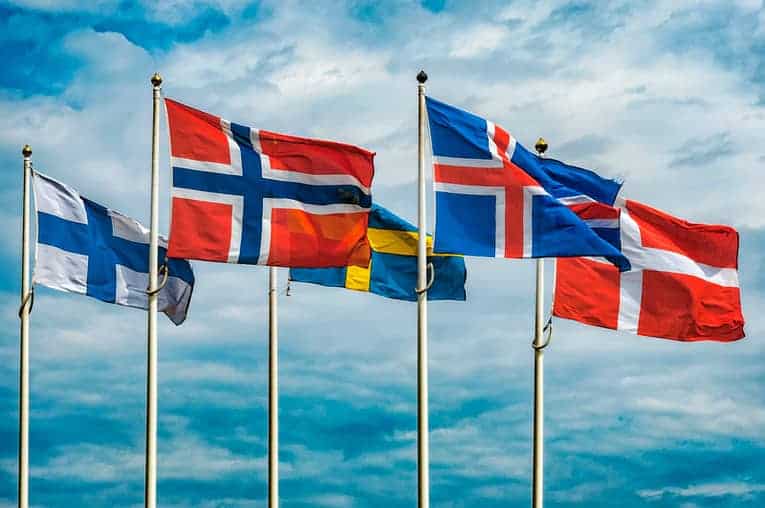
The Nordic Cross Flag
The cross design, representing Christianity, is found on every national flag in Scandinavia:
- Denmark’s flag depicts a red cross
- Norway’s flag has a blue cross white a white border
- Sweden’s flag has a yellow cross
- Finland’s flag has a blue cross
- Iceland’s flag has a red cross with a white border
- The Faroe Islands’ flag has a red cross with a blue border
What about Greenland? Though Greenland, which does not have a Nordic cross on its flag, has close historical and cultural relationships with Scandinavian countries, it is not conventionally considered part of Scandinavia.
Greenland is part of North America. (See more below.) The Nordic cross is a reminder of Christianity’s historical influence in the region:
Many predominantly Christian states show a cross, symbolizing Christianity, on their national flag.
The so-called Scandinavian crosses or Nordic crosses on the flags of the Nordic countries – Denmark, Finland, Iceland, Norway and Sweden – also represent Christianity. [1]
Christian missionaries first appeared in Scandinavia during the time of the Vikings.
Many historians believe conversions, which gained momentum in the 11th and 12th centuries, significantly contributed to the end of the Vikings’ way of life.
Subsequently, Christianity has been in Scandinavia for approximately a millennium.
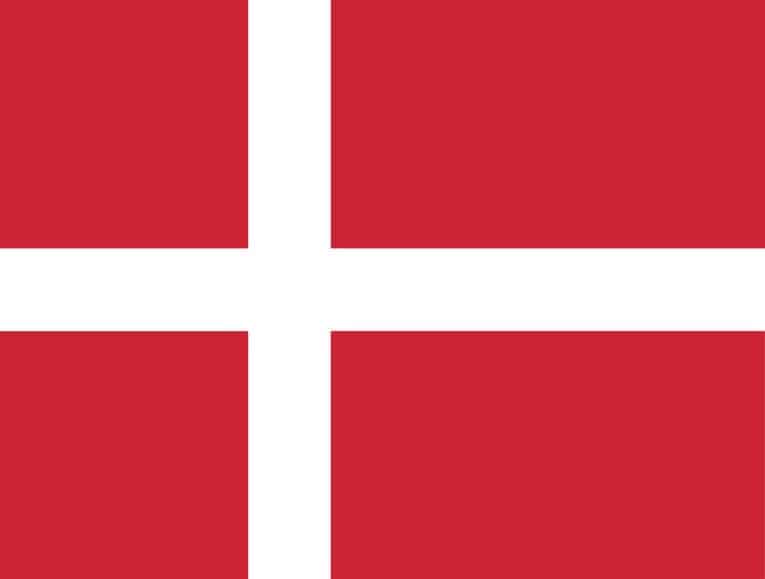
Flag of Denmark
| Flag name | Danneborg |
| Dates to | 14th century |
| Shape | rectangle |
| Design | Nordic cross |
| Colors | red, white |
The so-called “Danneborg” flag has the world record for being the oldest, continuously used national flag. Though the design was adopted in the 17th century, its roots can be traced back even further. The Guinness Book of World Records explains:
Although there is no prescribed definition of what constitutes “continuous” use, the Danish flag was certainly in use in the 1370s, as the Gelre Armorial by Claes Heinenzoon (or Heynen 1345-1414) shows.
It was also certainly used in the naval battles during the war against Sweden in the 1560s, as shown in a watercolour in Rudolf Dewenter’s Bericht von Pulver und Feuerwerken from 1585.
In his War Articles, promulgated on 8 May 1625, King Christian IV issued the first known regulations for flying the flag and Colours of Command in the Navy in Denmark. [2]
A brief history: Danish legend explains that the Dannebrog flag floated down from the sky during a battle fought by Valdemar II, king of Denmark, early in the 13th century.
The earliest writing in which the origin story of the flag is told is Christiern Pedersen’s Danske Kronink, which dates to 1520.
Other literary sources state that the flag’s first appearance occurred at other battles.
There are similarities in these stories, such as the flag’s appearance providing a needed boost to war-weary soldiers.
There are also discrepancies that cannot be easily resolved.
The Holy Roman Empire used the design of the white cross on a red flag in the 11th century during the Crusades, which were conflicts involving medieval Christian churches.
These flags were not identical to Denmark’s flag as they vary in shape and size, but the similarities are clear.
Hygge is a very popular practice in Scandinavian to reduce stress and promote relaxation. See Hygge: What Is It? Why Is It Popular? to learn more.
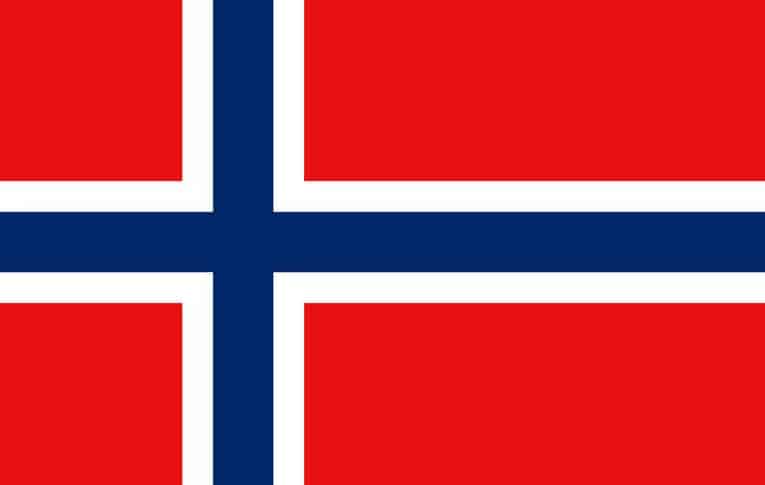
Flag of Norway
| Flag name: | Norges flagg |
| Dates to: | 19th century |
| Shape: | rectangle |
| Design: | Nordic cross |
| Colors | red, white, “indigo blue” |
The national flag of Norway, like other Scandinavian nations, is a Nordic cross. The Norwegian parliament adopted it in 1821. Prior to that, Norwegian kings utilized other flag designs with different images:
- King Olaf II Haraldsson (995-1030), i.e. Saint Olaf, flew a flag depicting a serpent
- King Inge (1135-1161), flew a flag depicting a lion
- King Sverre Sigurdsson (1145-1202) flew a flag depicting an eagle
- King Eric Magnusson (1268-1299) flew a flag depicting a gold-colored lion
Magnusson’s flag included a red background, and kings after him used his design, which helped to establish it as a royal symbol. The dominant red theme of the flag remains to the present day.
In addition to royal use, Norwegian ships, fortresses, and other entities eventually flew the flag as well. By the 16th century, the image on the flag was referred to as the “Norwegian lion,” further cementing the design as a national symbol.
From the 16th to 18th centuries, Norway was in an alliance with its southern neighbor, Denmark.
Norway flew the Danish flag, the Danneborg, during that period to symbolize the union between the nations.
In 1814, as an expression of national independence, Norway added the Norwegian lion to the hoist-side, upper left quadrant of Danneborg.
The addition is meant to distinguish Norway, yet also depict their regional alliance.
Norwegian political representative, Fredrik Meltzer, designed Norway’s current flag in 1821. He proposed the design to Parliament, which adopted it, amid several other proposals.
The king, however, permitted the flag for civil use only. Its widespread use didn’t occur until decades later.
Meltzer’s flag underwent a design change in the mid to late 19th century. Norway at the time was in an alliance with Sweden, and various details were added to the flag to depict their union.
None of the changes, however, was long-lasting.
When geopolitical winds shifted toward the end of the 19th century, the design of the flag did as well.
In 1899, the “pure” Norwegian flag, i.e., Meltzer’s original design, was flown without any features depicting their Swedish alliance. Meltzer’s flag design has been used in Norway ever since.
Interesting ordinances pertaining to the Norwegian flag:
- From March to October every year, the flag should be raised at 8:00am; from November to February it should be raised at 9:00am [3]
- According to cultural convention (not federal law), the flag should not be worn on the body below the waist
Scandinavia is known in part for its health care and other social benefits. See Democratic Socialism in Scandinavia to learn more.

Flag of Finland
| Flag name: | Soumen Iippu |
| Dates to: | 20th century |
| Shape: | rectangle |
| Design: | Nordic Cross |
| Colors: | white and blue |
The blue color of the Nordic cross on the flag of Finland depicts the lakes that are found embedded in the landscape as well as the clear sky overhead.
The white depicts the snow in the country that falls in the winter and covers the mountain peaks year-round.
The flag of Finland is rooted in a 19th-century yacht club called the Nylandska Jaktklubben, i.e., “Nyland” Yacht Club. Nyland is a region in Southwest Finland.
The hoist-side, upper left-side quadrant of the flag, contained two crossing branches representing the Nyland region. However, that feature was later dropped from the flag.
The blue and white design is similar to certain Russian flags from the 19th century, which reflects the nation’s influence at the time over the Scandinavian nation.
Independence results in a new flag design: Proposals for a new national flag were submitted as part of a nationwide competition when Finland gained independence from Russia in 1971.
Designs that reflected the flags of other countries were common, including Denmark, Sweden, and Greece.
- Proposals included several red and yellow designs, some with stripes, other with crosses
- Another entry showed a diagonally striped white and blue pattern with a white star in the middle
- Yet another standout was a proposal of a rectangle shape with a navy blue background with one lone white star in the middle
The winning design came from a two-man team: Eero Snellman and Bruno Tunkkanen. The men based their design on a 19th-century poet Zachris Topelius.
In 1978, the form of the flag was changed from a coat of arms design to the rectangular shape that is today.
Interesting ordinances pertaining to the Finnish flag:
- One custom in Finland is that the flag is flown at Midsummer from 6:00pm of Midsummer eve until 9 pm of Midsummer’s day; this is done to remind people that darkness does not come to any part of Finland during Midsummer’s Night [4]
- One proper way to dispose of an old, worn Finnish flag is to cut it into small enough pieces that no part is recognizable as the national flag
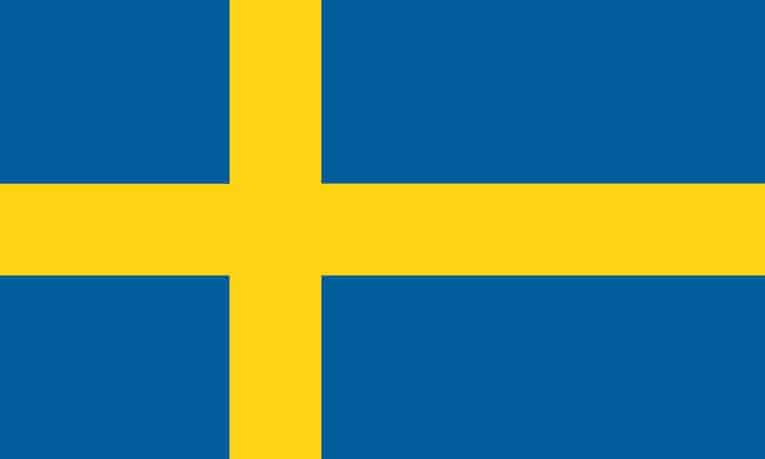
Flag of Sweden
| Flag name: | Sveriges flagga |
| Dates to: | 20th century |
| Shape: | rectangle |
| Design: | Nordic cross |
| Colors: | light medium blue golden yellow |
The yellow, or gold, cross has roots in the mythology from the Crusades, which were medieval battles fought by the Christian church.
Legend says that King Eric IX (died 1160), i.e., Saint Eric, spotted a golden cross against the blue sky over Finland in 1157, which he interpreted to be a sign from God regarding the success of his battles.
There are other competing origins stories of the blue and yellow design, most of which involve accrediting various kings and signal victory in battles, yet none of them have historical support in the form of reliable evidence.
The first physical evidence known to exist that depicts a yellow cross against a blue background dates to the 16th century.
The design was employed by King Gustav I (1496-1560) and it appeared on legal documents in the following decades.
In the 17th and 18th centuries, courts mandated the use of yellow and blue flag designs to identify Swedish entities like merchant ships. The shapes of the flags, however, varied.
In the 19th century, there were variants of Swedish flags that reflected political and regional alliances, such as with Norway.
Then, in 1906, a law was passed that regulated the use of the blue and yellow flag design. Specifically, the colors were to be “light-medium blue” and “golden yellow.”
Interesting ordinances pertaining to the Swedish flag:
- If the flag is still illuminated by the sun during summertime, it may remain up even after the sun has set
- Old, worn-out Swedish flags may be disposed of by respectfully burning it, though not with the intention of disgracing it [5]
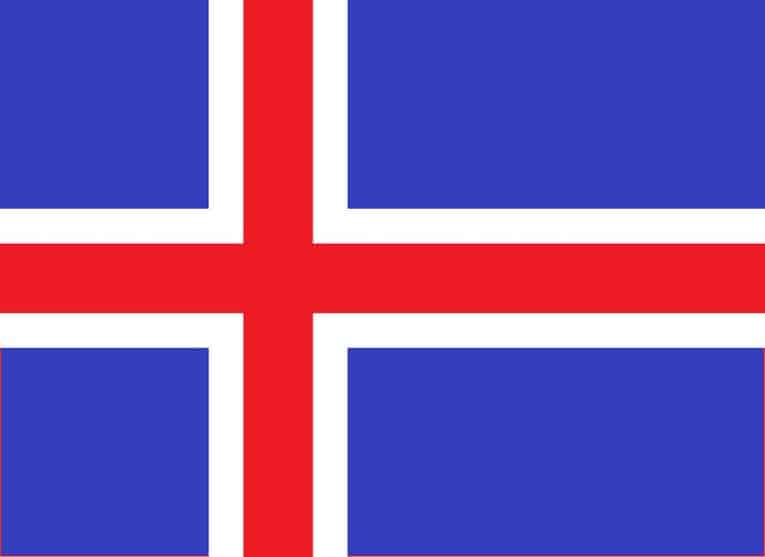
Flag of Iceland
| Flag name: | islenski faninn |
| Dates to: | 20th century |
| Shape: | rectangle |
| Design: | Nordic cross |
| Colors: | red, white, blue |
The Nordic, or Scandinavian cross, design, is rooted in Iceland’s shared history with Denmark.
According to legend, a flag with a white cross on a red background fell from the sky during a Danish battle in the 13th century.
The flag design was understood to be a sign from God, approving Denmark’s military ambitions in the region at the time. The design reminded people of their God-given right to live and thrive.
This worldview, in part, was transferred to Icelanders as part of Denmark’s cultural and historical influence over the island nation.
The present-day flag of Iceland, with the Nordic cross and three-color design, dates to 1913.
Its creation at the time signified that Iceland was a unique country with a unique people and culture of its own.
The flag design was adopted in 1915 and has been used at sea since 1918. The use of the current flag design was made law in 1944. The statute reads:
The civil national flag of Icelanders is blue as the sky with a snow-white cross, and a fiery-red cross inside the white cross.
The arms of the cross extend to the edge of the flag, and their combined width is 2⁄9, but the red cross 1⁄9 of the combined width of the flag.
The blue areas are right angled rectangles, the rectilinear surfaces are parallel and the outer rectilinear surfaces as wide as them, but twice the length.
The dimensions between the width and length are 18:25. [6]
Meaning of the colors:
- Blue represents the color of the mountains as they seen from the coast
- White represents snow and ice, which covers much of the island during the year
- Red depicts the island’s volcanic activity; Iceland has approximately 30 active volcanic systems
Interesting ordinances pertaining to the Icelandic flag:
- Disrespecting the flag in act or word can result in a fine or imprisonment of up to one year
- If the flag is hoisted at an official gathering that is being held outdoors, like a funeral or a memorial, it may be flown as long as the event lasts, though never beyond midnight
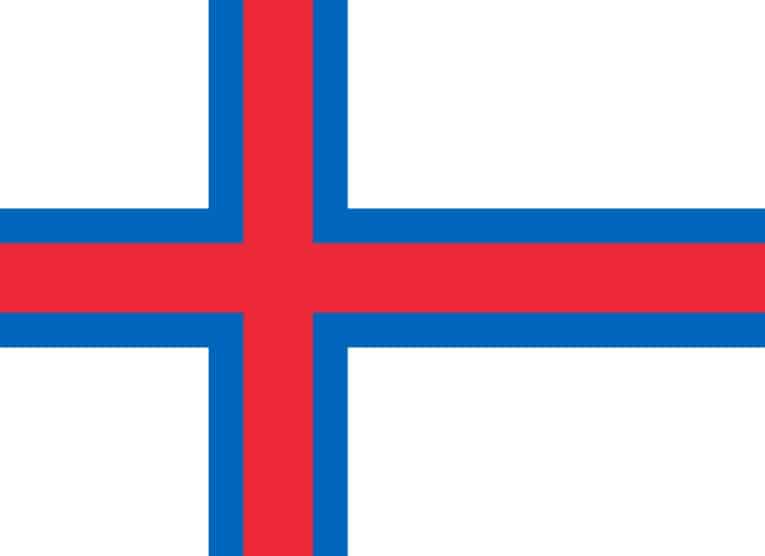
Flag of The Faroe Islands
| Flag name: | Meriko (“the hammer”) |
| Dates to: | 20th century |
| Shape: | rectangle |
| Design: | Nordic cross |
| Colors: | red, white, blue |
The flag of Iceland is similar in shape, design, and color to Norway’s flag. The three-color pattern, however, shades different parts of their respective designs.
The Nordic cross feature on the flag is rooted in Danish history where legend says it fell from the sky during a battle, signifying God’s favor on their efforts and giving much-needed courage and hope to soldiers.
Meaning of the colors:
- white: depicts part of the sea like the foam and crashing waves that surround the island; it also depicts the bright sky and clouds above
- blue: while the sea and sky also contain blue shades, this depicts unity with other Scandinavian countries that also have blue in their flag
- red: red is also rooted in the history and flags of Nordic countries, in particular Denmark, of which the island is a territory
Jens Oliver Lisberg (1896-1920) designed the flag when he was a law student in Copenhagen in 1919. It was first flown on the Faroe Islands in June 1919.
Sadly, Lisberg died one year later at the age of 23. The flag wasn’t officially recognized until 1940. Denmark didn’t officially recognize it as the flag of the islands until 1948.
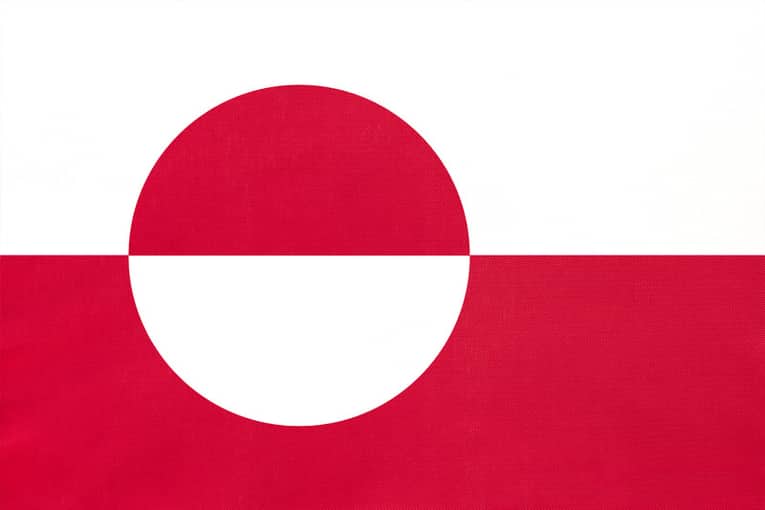
Flag of Greenland
| Flag name: | Erfalasorput (“our flag”) |
| Dates to: | 20th century |
| Shape: | rectangle |
| Design: | horizontal design with right-side circle |
| Colors: | red, white |
Greenland is part of North America, not Scandinavia, but due to the country’s historical and cultural ties to Northern Europe, it is included in this article.
As can be seen in the flag design above, is the only nation in the region that doesn’t bear a Nordic cross.
Greenland’s current flag dates to the 1970s.
At that time, a contest was run with the help of a local newspaper. People submitted design proposals for a new flag and one would be declared the winner.
Out of 11 designs received, only one submission didn’t depict a Nordic cross, like the flags of Greenland’s Scandinavian neighbors.
A poll was taken to determine which flag people liked best. Voters opted for the flag of Denmark rather than a new, unique design. This, however, defeated the purpose of giving Greenland a unique design, so the effort was temporarily suspended.
In 1978, another effort was made and new designs were proposed, but the process didn’t produce a new flag for the country.
Then in 1989, Thue Christiansen, a teacher, and politician, proposed a design that resulted in a new flag for Greenland. Christiansen’s proposal is Greenland’s current flag. It was officially adopted on May 1, 1989.
Final thoughts
Flags reflect the people who create them, are represented by them, and fly them. They often reveal a country’s history, culture, and even values.
Scandinavian flags are reflections of the people who live, and who have lived, in Norway, Denmark, Sweden, Finland, Iceland, and the Faroe Islands.
They tell stories of the past, represent people today, and point to the future.
References:
[1] Source
[2] Source
[3] Source
[4] Source
[5] Source
[6] Source
